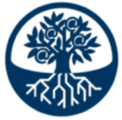Anti-Cybersquatting Consumer Protection Act
DNS Seal, a best practices wiki for DNS | |
 |
The Anti-Cybersquatting Consumer Protection Act (ACPA) was signed into federal law in 1999.[1] This act protects trademark rights holders from domain name abuses, such as Cybersquatting and Typosquatting. It allows a rights holder to address trademark infringement in court. Unlike in UDRP proceedings, the rights holder can seek monetary redress, ranging from $1,000-100,000 per domain, in addition to the transfer or cancellation of the disputed name.[2] In addition, ACPA proceedings can be used to overturn UDRP rulings.[3]
Provisions edit
In order to violate the the ACPA, a registrant must be using or "trafficking" in the offending domain name, must be using the name in bad faith "with intent to profit," and must be using a domain that contains a mark that is "confusingly similar" or identical to the registered trademark.[2] As a result, if a site has a name that is the same as a trademark, the registrant is not necessarily liable under the ACPA if they are using the domain in good faith.
Confusingly Similar or Identical edit
To violate the ACPA, a domain name must contain a famous or trademarked name or a name that is similar enough to the trademark to confuse users. Neither the TLD nor any path is considered when determining if the domain name is similar or identical to the mark.[2] However, registering a domain name that is similar to a trademark does not in itself constitute a violation of the ACPA. For instance, a registrant's legal name might contain a trademark, and for the registrant to use that domain for a personal webpage unrelated to the trademark is not usually considered abusive.[2]
Bad Faith edit
To violate the ACPA, a domain registrant must also show bad faith. There are a number of different behaviors that may indicate bad faith according to the ACPA.[4] The use and registration of a domain is considered abusive if it "sought to divert customers from a trademark owner's website to another that, either for purposes of commercial gain or to tarnish the mark, could harm the goodwill represented by the mark."[4] So, it would constitute bad faith if a cybersquatter registered a domain with the intent to charge the trademark rights holder a large amount of money to get it back.[2] Additionally, if a typosquatter was using a misspelling of a large brand in order to siphon away customers, it would be also be considered a bad faith usage.[4] Seeking to "tarnish" the trademark or brand by putting up explicit images or porn on the site constitutes bad faith as well.[4] If the court determines that the registrant had a legitimate use for the name, or showed good faith, the registrant is not guilty of breaking the ACPA.[2]
Use and Traffic edit
The use element of the ACPA addresses the registrant of the domain in question. It must be shown that the registrant or a party appointed by the registrant were the ones using the domain in bad faith.[2] If the domain registrant used false Whois or is not a resident of the U.S., ACPA proceedings can still be used to have the domain transferred or its registration cancelled; however, it cannot award any monetary relief.[2] The trafficking element addresses whether or not the registrant has gained financially from the domain in question.[4]
Reverse Domain Name Hijacking edit
In the case of reverse domain name hijacking, or using ACPA or UDRP proceedings to procure a domain name that a registrant has used in good faith and has legal rights to, the court can rule against the trademark holder and overrule previous determinations.[5][6]
- In a reverse domain name hijacking cases, trademark or brand owners have been forced to pay $100,000 or more in damages to the original registrants.[6][7]
Points to Consider edit
- Gripe sites, which can sometimes be considered legitimate uses of a domain, can also violate ACPA standards if the registrant of the site seeks to make a profit or offer the trademark holder to take the site down for a price.[2]
- UDRP proceedings are considered to be a faster and cheaper alternative as litigation is not involved. However, UDRP proceedings do not award monetary relief.
- In an ACPA case involving Facebook and multiple cybersquatters in 2013, Facebook was given 2.8 million dollars in damages.[2] Sometimes extensive amounts of money can be involved in ACPA cases.
Additional Resources edit
- View the ACPA
- Read about Facebook's ACPA Case
Related Articles edit
References edit
- ↑ http://www.lexology.com/library/detail.aspx?g=7088bf09-8a9e-4449-a179-d90bdfad3310 by Christy Roth, Marianne Dunham and Jason Watson (May 10, 2013), Lexology
- ↑ 2.00 2.01 2.02 2.03 2.04 2.05 2.06 2.07 2.08 2.09 http://www.internetlibrary.com/publications/anticybsquattSamson9-05_art.cfm by Martin Samson, Internet Library of Law and Court Decisions
- ↑ http://www.pmdlaw.com/acpa-text.html US Code 15, Commerce and Trade as shown on pmdlaw.com
- ↑ 4.0 4.1 4.2 4.3 4.4 https://www.chillingeffects.org/acpa/faq.cgi#QID40 Chilling Effects Clearinghouse
- ↑ http://www.domainsherpa.com/domain-name-dictionary/reverse-domain-name-hijacking/ DomainSherpa
- ↑ 6.0 6.1 http://www.rdnh.com/rdnh-provision-udrp/ RDNH.com
- ↑ http://domainnamewire.com/2011/03/29/court-awards-digimedia-100000-for-reverse-domain-name-hijacking/ by Andrew Allemann (March 29, 2011), Domain Name Wire